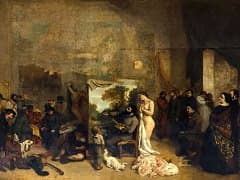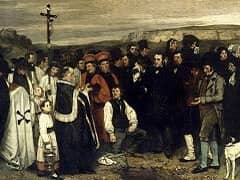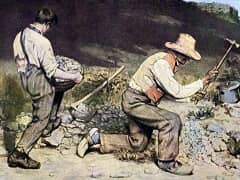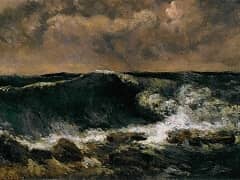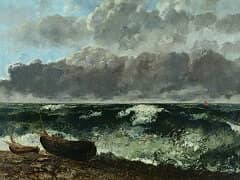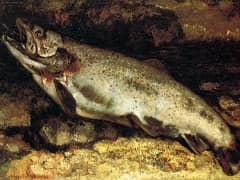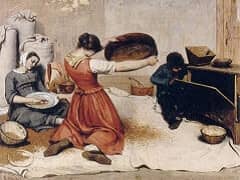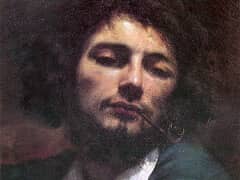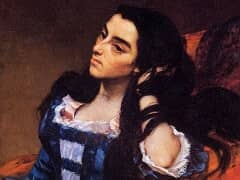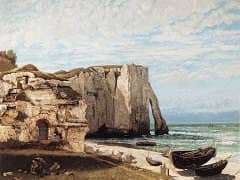The Hammock, 1844 by Gustave Courbet
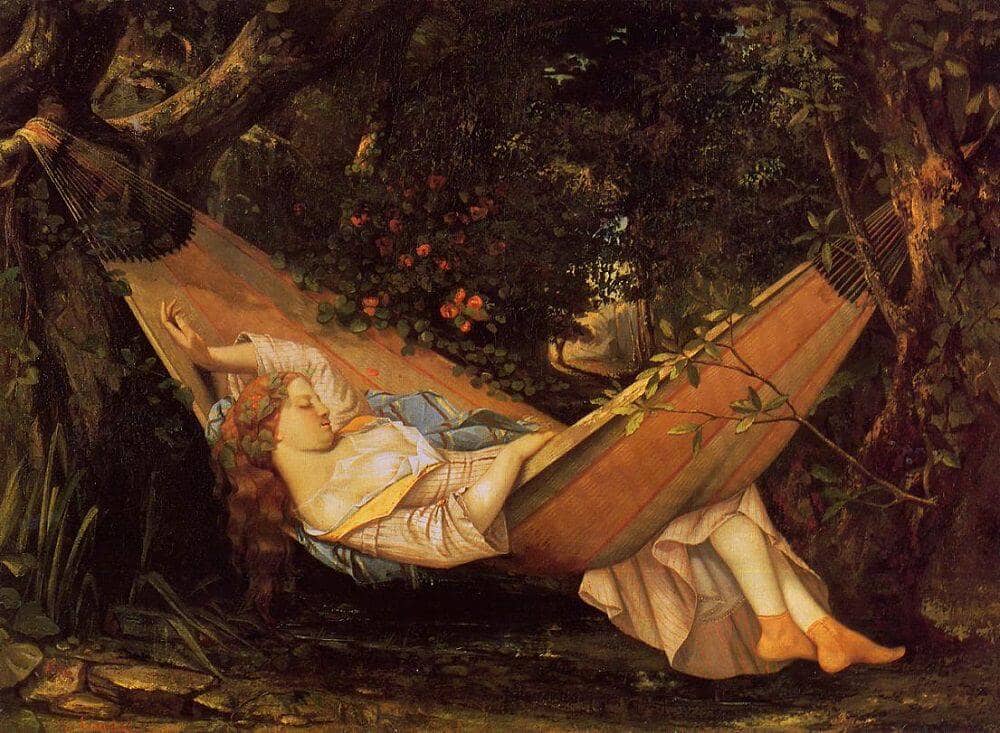
The Hammock has been identified as the painting entitled La Reve, which was unsuccessfully submitted to the Salon of 1845. Like The Guitar Player, the one painting that was accepted that year, The Hammock is an example of Courbet's use of the Troubador Style, here on a more ambitious scale than that of the successful painting. In fact this is surely Courbet's most impressive venture in that popular mode of medievalizing genre, a painting in which the young artist declares himself the master of its techniques while at the same time creating a mood that shifts right away from its anecdotal conventions. The figure is something out of a fairy tale, a princesse du pays lointain, with long golden hair and a tight-waisted gown, as fast asleep as any Beauty awaiting the Prince's awakening kiss; yet she is pulled out of the innocent mode by the erotic frankness of her filmily bared breasts. The striped fabrics of her dress and shawl are delicious, as are the yellow booties on her Romantically tiny feet, clinging as closely as gloves and bringing to mind the tight yellow- gloves of the foreground figure in The Young Ladies on the Banks of the Seine of twelve years later. This is not the only reminder of later work, for the painting is filled with motifs and themes that are central to the painter's entire oeuvre. The thick, flowing waves of the red-gold hair are virtually a presentiment of Whistler's mistress-model Jo, subject of one of Courbet's most obsessive series of paintings. The theme of the female figure in a forested setting is one that continues throughout his career. Invariably in these paintings there is the presence of water, felt always in Courbet's work as a kind of female force; in this painting it flows directly beneath the laden hammock only inches from the figure's delicately clad feet. The beauty of the bosky setting is enhanced by the deep space at the center, where the sunlight pours into an open clearing, and by the opulence of the foliage surrounding the figure.


